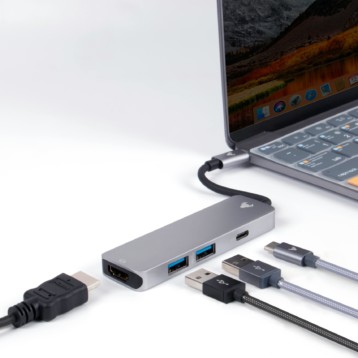
Creating a mobile application is one of the most popular business solutions right now. Most major businesses have already developed mobile apps for different platforms to provide their services. Users, in the meantime, don’t seem to have enough apps: there were 204 billion mobile app downloads in 2019, generating a revenue of $462 billion.
Under that light, developing a mobile app feels like a natural thing to do. But do you know that there are many hidden costs of mobile app development?. From publishing fees to infrastructure costs, these expenses can be quite hefty. And if you’re not careful, you might miss a few of these costs while you’re budgeting for your mobile application.
One way to avoid these mistakes is to outsource development to an experienced outsourcing vendor. Doing that will ensure that you get a good product without using extra resources and without having to face nasty surprises down the line. But so you’re informed, let’s have a look at what costs most people ignore while creating a business application.
1. Cost of maintaining the app
This includes the cost of maintaining and updating an app. Some apps are easy to update while others require long hours and expertise for simple changes. As the app’s creator, you have to provide regular security and bug fixes for your application to stay in the market.
Also, Android and iOS regularly update their platforms, so you are supposed to keep up by regularly updating your application to fit with the changes. What’s more, every time an API is updated, it changes the way it interacts with your app. That means that you have to work on the finished aspects of your application again if you’re using that API. This increases maintenance costs for your app.
Finally, many bugs aren’t fixed during app testing but are caught after release by end-users. Naturally, you’ll need to fix those through upgrades, which you’ll have to pay a price for that will vary depending on the gravity of the bug.
2. Publishing costs
The most common platforms are Google Play and iOS. Both platforms have their own publishing costs that have to be borne by the developer.
Also, if you want to be on both Android/iOS, you need to learn different languages or hire developers that do it for you. That increases development costs. Sure, you can avoid those extra costs by developing a cross-platform app but what you save in costs limits your ability to leverage both systems’ peculiarities to a maximum.
3. Technical support
Most companies these days interact with customers via chat and phone support. For this, you need to spend money to implement additional plugins and services.
You may have to hire customer service reps and invest in a chatbot that takes care of basic requests. You also have to invest in a ticketing system to assign the workload automatically to the concerned teams so they can take care of it as soon as possible.
4. Infrastructure
Infrastructure is one of the most significant investments you can make for your app creation. Many factors add up to infrastructure costs. First, you have to pay for server hosting. You can choose a hosting package from a vendor based on features and support. Most companies use some kind of hosting provider for their services (i.e. Amazon Web Services).
You also have to buy storage. Typically most companies buy storage from the same vendor they get their hosting. Moreover, if you’re using images, you have to get additional storage as images can have large file sizes.
All the infrastructure parts (i.e., servers, storage facilities, and images) need regular maintenance as well. You might have to pay to update them from time to time. Also, you have to integrate a Content Delivery Network (CDN) service into your app to cater to audiences worldwide. This cost can vary, depending on your vendor.
5. Development tools
When you’re developing an app, you have to buy packages, libraries, and frameworks. For custom features, you have to buy the pro version for these tools. Of course, purchasing the pro version comes with a support option, but they also cost more. This adds extra expenses to the production cost.
And if a library is a critical one, you will have to buy long term plans, which can also be costly.
6. Marketing costs
If you’re building an application, you obviously want it to perform well. You don’t want it to just sit there in the app store. To do that, you have to get the audience’s attention. And that’s accomplished through effective marketing.
But marketing costs can also run very high. You might have to use ads for advertising campaigns. Or you might want to use influencer marketing. Whichever way you see it, marketing is an expense you can’t avoid.
7. Other services
If you want additional services for your application, you have to pay extra for them. For example, push notifications, SMS updates for new offers, subscriptions to your blog to create an email list, etc. All of these might end up costing you some extra money.
Many companies are also adding features like chat messaging/ social media messaging for their customers. You have to invest in these too. Additionally, you have to accommodate any changes in the requirements that may happen mid-development
So these are some of the hidden costs of mobile development. To prevent problems like these and ensure that your development doesn’t go over budget, you can take the following steps.
- Invest in a good framework. And when you do, make sure that you thoroughly research the platform and know everything about it. Yes, investing in a platform costs extra, but doing so will help reduce expenses related to other services and API in the long run.
Chances are that the services you need are already integrated into your platform, or it has an alternate option/feature/ built-in plugin for that.
- Instead of using old outbound marketing techniques, you can focus on an inbound marketing approach. It’s less costly and helps you generate the necessary attention to your application. Leveraging techniques like SEO and digital marketing will help you reduce advertising costs.
- Choose a technology that has a lasting and long term application for your app. It will help you expand your services in the future and make sure that you are up to date with the market.
- Try to reduce the third party tools you use. Of course, there are a few tools that you can’t do without, but don’t be overly dependent on tools for everything. Some tools are difficult to implement and they can take a huge chunk out of your running costs.
- Take up long term plans from hosting companies. Most companies provide a hefty discount for long term plans. You can also get in touch with customer service and gain knowledge about their plans and pricing.
Conclusion
More than development costs, these hidden costs are the ones that you should be considering, as they can quickly pile up. To avoid that, make sure that you calculate every possible cost and create a plan that helps you stick to your budget. You can also have a talk with your developers about this.
Also, make sure that your requirements are set from the beginning. The further you introduce changes in the development process, the more costly it will be to fix things. Be vigilant and try to understand the underlying issues. That will help you reduce costs and increase efficiency without impacting your resources.









